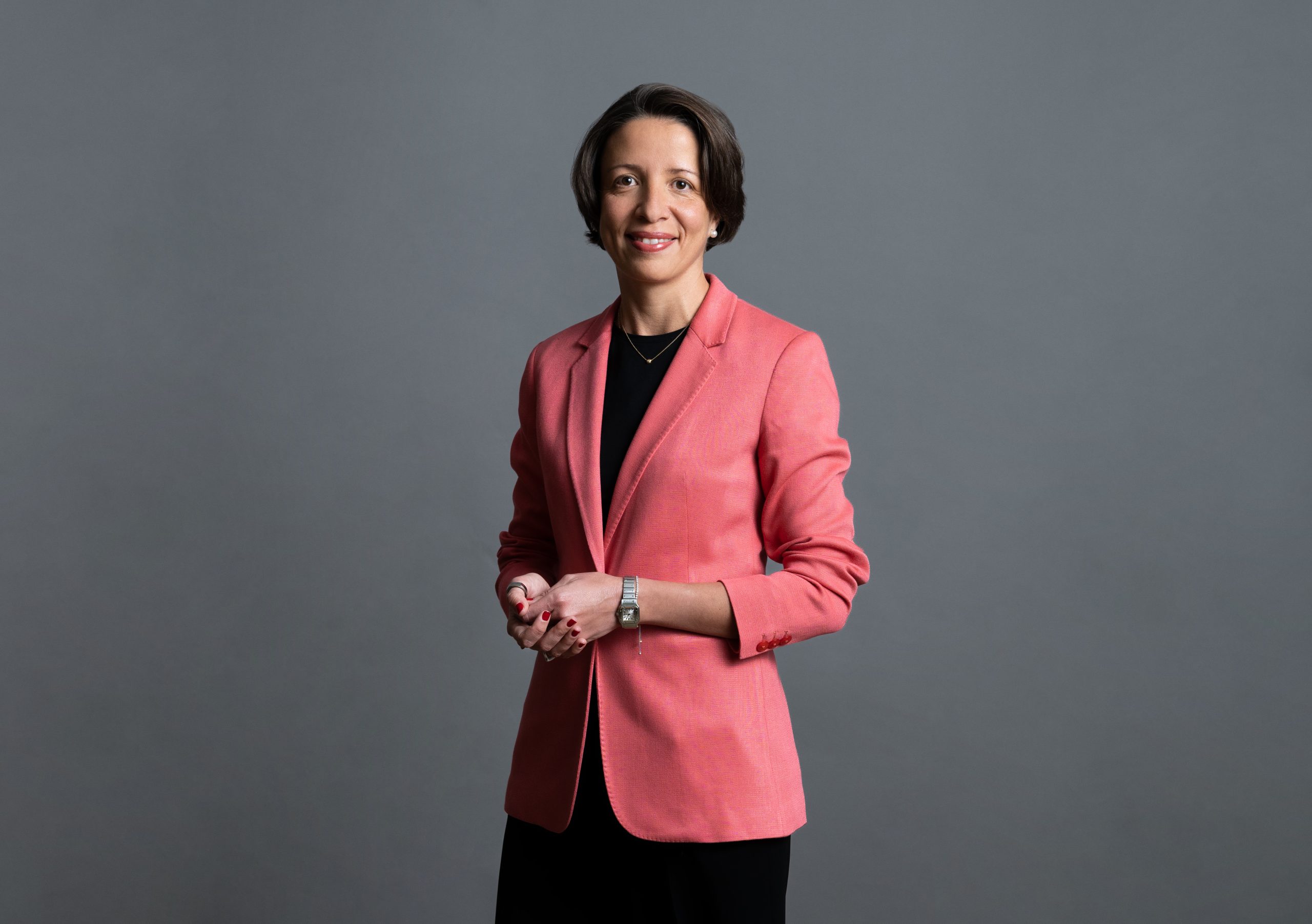Developing the Next Generation of Talent within the Energy Industry:
An Interview with SLB Chief People Officer, Carmen Rando Bejar

A title
Image Box text
The oil and gas industry is facing a number of challenges, including the need to balance increasing demand for energy with the need to reduce emissions and move toward clean energy systems.. The industry needs to attract and retain a talented workforce to meet these challenges.
SLB is a leading global technology company that is committed to developing the next generation of talent within the energy industry. For our cover story and the main article for this issue, we interviewed SLB CPO, Carmen where we discussed the current state of affairs within the energy industry, SLB’s approach to talent development, the skills that are needed for the future of the energy industry, and how the industry can attract and retain the next generation of talent.
Industry Background
The energy industry currently lies at a crossroads where technology adoption is no longer a luxury but rather a necessity to meet energy transition ambitions. However, a McKinsey research study revealed the industry sector where digital natives (Generation Y or millennials) would least like to work is oil and gas– with 14% of respondents admitting they would not seek a career due to its perceived negative image. Some of the criticism is attributed to the rigid hierarchical management infrastructure where innovation and ideas are overlooked and a slowness in embracing newer ways of operating. Millennials are no longer a small group of new university graduates; in many oil and gas companies, they occupy managerial roles and are starting to climb into the executive ranks. Therefore, the need to evolve to retain and attract talent is more pressing than ever to meet energy demands and thrive in the era of new energy.
Q1) The energy industry has a perceived negative image (impact on climate change and low-tech adoption), how can energy companies combat this perception?
The industry needs to clearly articulate its value proposition.
I am convinced that, for those who have the desire to make a positive, meaningful, and lasting impact in society, for those with a taste for technology and science, our industry is the place to be. But we need to be able to clearly convey the message.
The world needs more energy. For most of the world’s population, access to energy doesn’t mean more comfort, as is the case in developed countries. It means a greater life expectancy. There is a direct correlation, as shown by the IEA. So, access to energy for many means access to LIFE.
And at the same time, we must also protect our planet, and there is great urgency on that, as in this aspect too lives are on the line.
So, we, as humanity, have a great challenge ahead of us. Providing sufficient, reliable and affordable access to clean energy to meet the world’s needs. At SLB, we refer to this as the “world’s greatest balancing act”.
And this trilemma will only be addressed through science, technology and digital innovation, in combination with evolving regulations, relevant financial mechanisms, and government incentives.
Our industry encompasses many essential capabilities. We have a wealth of talented, expert scientists and engineers; we have long been in the business of developing innovative technologies and solutions to address some of the most complex challenges that exist; and we have an in-depth knowledge of the energy systems. Nobody is better positioned than us to help solve the energy trilemma.
I also see a huge desire from many people—both inside SLB and across the wider industry—to make a positive impact for the planet.
If you want to drive change, our industry, the energy industry, is the place to be.
We also need to educate public opinion. I hear statements about low levels of tech adoption, for instance. How is that possible? We create cutting-edge technology to be used in the most extreme conditions and environments there are! We need to do a better job of explaining this to society.
Last, and very importantly, we need to join forces. As members of this industry, we need to collaborate to address this negative image that does not reflect who we are and where we are going. Within the industry, we need to constantly raise the bar for each other when it comes to delivering on the decarbonization of our own industry and on the transition to a new energy landscape, and externally we need to be consistent in our message. We need to both listen and speak up, and educate society while remaining open and humble.
Q2) The new generation of potential employees has a different view when valuing future careers, younger generations consider company values and social impact as important factors for future employers. What can the energy industry do to enhance that image? What is SLB doing in this regard?
First of all, our industry needs to continue to embrace sustainability. We need to be committed to decarbonizing the energy systems, and we need to be able to demonstrate that commitment through tangible and quantifiable initiatives.
Beyond climate impact, we need to show our leadership when it comes to social impact. Many of us have been leading the way on employee health and safety; we need to continue extending that leadership into labor standards, community engagement or diversity and inclusion, among others.
And we need to lead with determination and commitment—but also with transparency. Because leading with transparency promotes accountability, builds trust, drives improvement, and addresses global challenges more effectively.
At SLB, we have an unwavering commitment to sustainability in all its dimensions. It is an integral element of our strategy, and what better way to publicly display our commitment than to make it part of our new visual identity. Last October, we launched a new identity focusing on energy innovation and decarbonization to address the world’s energy needs today and to forge the road ahead for the energy transition. Our new logo represents the carbon budget curve, showing the emissions reduction required to achieve the Paris Agreement. But it is not only a logo. Behind the logo stand all the actions that we are taking to deliver innovation at speed and scale across the energy landscape to pave a path to net zero and beyond.
Our recently published Sustainability report shows our actions to address our three priorities: Climate Action, People, and Nature. We believe that these actions are the responsibility of each of us, so we have allocated sustainability KPOs to all our incentivized employees with the aim to empower everyone to prioritize emissions reduction actions, focused on our Scope 1-3 emissions.
We are also leading with transparency when it comes to diversity and inclusion. Women comprised 30% of our executive team at year-end 2022 and represented 23.8% of all salaried positions. In 2022, SLB released its first global Women and Pay report relative to 2021 performance. It was a pioneering act in the energy sector, aimed at increasing the transparency of our pay practices to employees and external stakeholders and supporting joint efforts industry-wide to further attract female talent.
This report also serves as an accountability mechanism for SLB’s gender balance targets, including our goal of having 30% women in our salaried workforce by 2030.
Our purpose is to create amazing technology that unlocks access to energy for the benefit of all. It is what drives us. We are passionate about ensuring progress for people and the planet, on the journey to net zero and beyond. The drive, the ideas and the contributions of our exceptional and diverse people can help to move the world forward.
Q3) What steps can the industry take to become more attractive to the youngest generation of workers, Gen Z?
The new generations are looking for a relationship with their employers beyond receiving a paycheck. They are looking for a purpose. As an industry, we need to be ready to articulate that purpose—and of course we need to be committed to deliver on it. This is what I described earlier.
The generations that we are recruiting nowadays are digital natives. And of course, they want the same experience in their professional lives that they have in their personal lives. From that perspective, digital at work is a must-have. The industry needs to accelerate digital adoption, for all the good business reasons, but also to be able to offer it as part of the employee experience for the digital-savvy generations.
New generations are looking for flexibility in their working arrangements. We should leverage our experience during the pandemic to provide opportunities for flexible working.
Historically, our industry has been associated with a leadership style of control and command. The new generations are looking for authentic leaders that acknowledge and support them as human beings to reach their full potential . This means we need leaders that are ready to show vulnerability, humility, and compassion, adopting a style of leadership that shows care, and promotes development and well-being, both at work andin their personal lives.
Q4) How can organizations prioritize the development and retention of younger generations while balancing other strategic challenges, such as sustainability and digital transformation?
These priorities go hand in hand, as a healthy talent pipeline is the foundation for any successful business strategy.
To deliver on your company’s strategic directions, you need a competent workforce capable of addressing the challenges of an ever-changing world and innovating at scale. To get your workforce ready to deliver on these aspects, development is key and needs to be prioritized.
For that reason, training and development of the workforce need to be understood as an investment, not a cost.
What we want is to maximize the return on that investment. This can be achieved through a combination of three things:
- Investing in your talent to build workforce competencies aligned with your strategy.
- Developing learning systems to enable employees to be productive in these new competencies and skills as quickly as possible.
- Leveraging technology through a blended learning system that delivers a combination of instructor-led training and virtual training, as this will be more effective and decrease your cost.
I believe that having those capabilities and providing these opportunities to our employees is highly motivating. This is about ensuring that the skills of our employees remain compatible with our needs, as much as it is about providing the opportunity to our employees to remain relevant in a fast-evolving world in such a way that they do not feel the need to leave the organization to remain up to date.
It is a very compelling value proposition for our current and future talent to excel in this evolving industry that offers so many exciting opportunities.
The energy industry is facing a number of challenges from meeting the growing energy demand to aiding the energy transition and meeting climate ambitions. While this won’t be easy, it is an exciting opportunity for the next generation of talent to make a global impact, and there is plenty of space, especially for those who are driven to solve the world’s most pressing problems, and who are motivated by the possibilities of technology and science. If the industry can adapt to the needs of the next-generation workforce, it will be well-positioned for success in the years to come.
To read SLB’s sustainability report visit
https://www.slb.com/-/media/files/sustainability/2022/sustainability-report-2022.ashx


Thank you Carmen for the insights and stressing the importance of Energy Access for Life expectancy, while focussing on climate change and how SLB is successfully navigating its way out of this complex trilemma. I firmly believe our industry is the right place to lead this change.